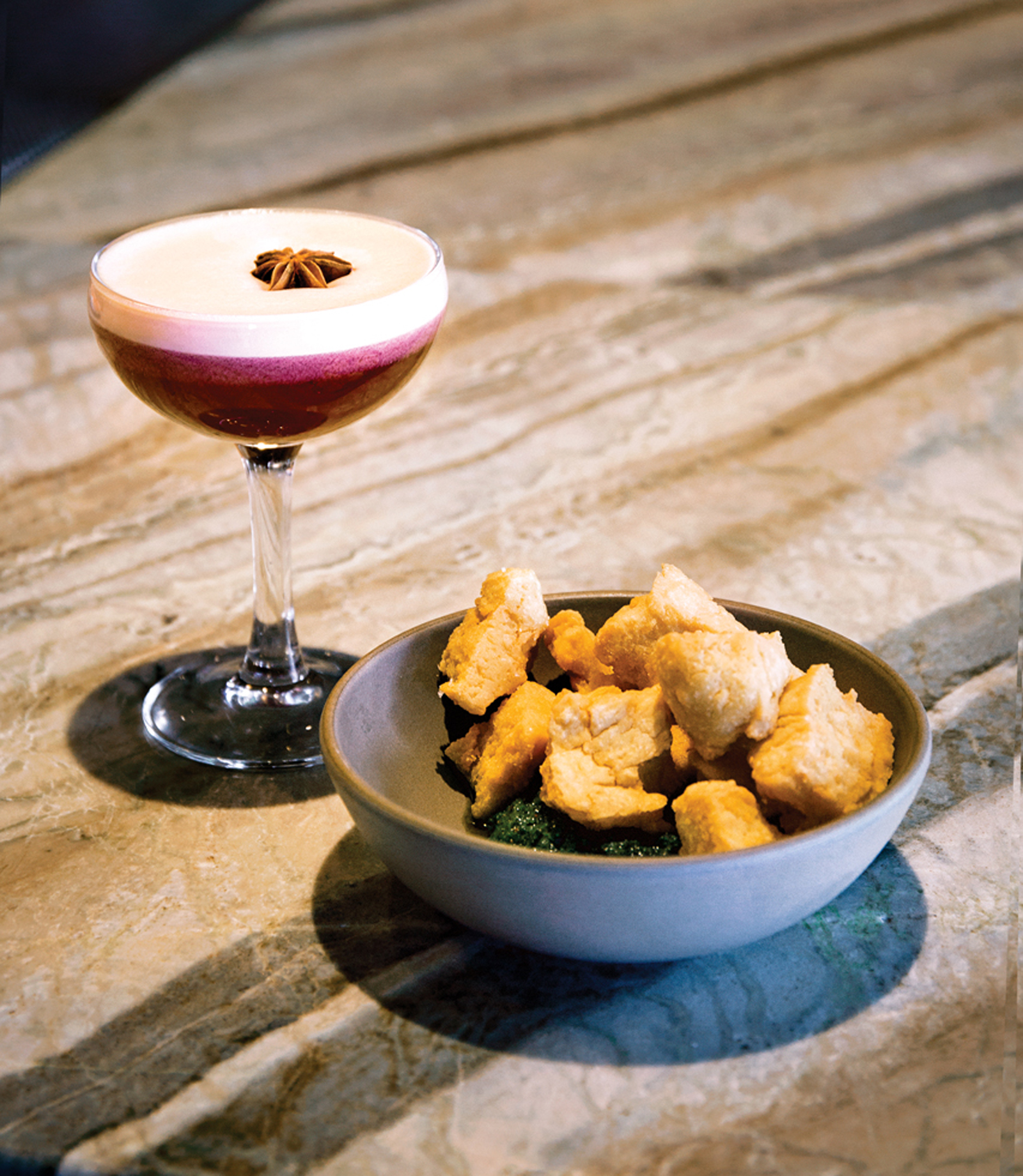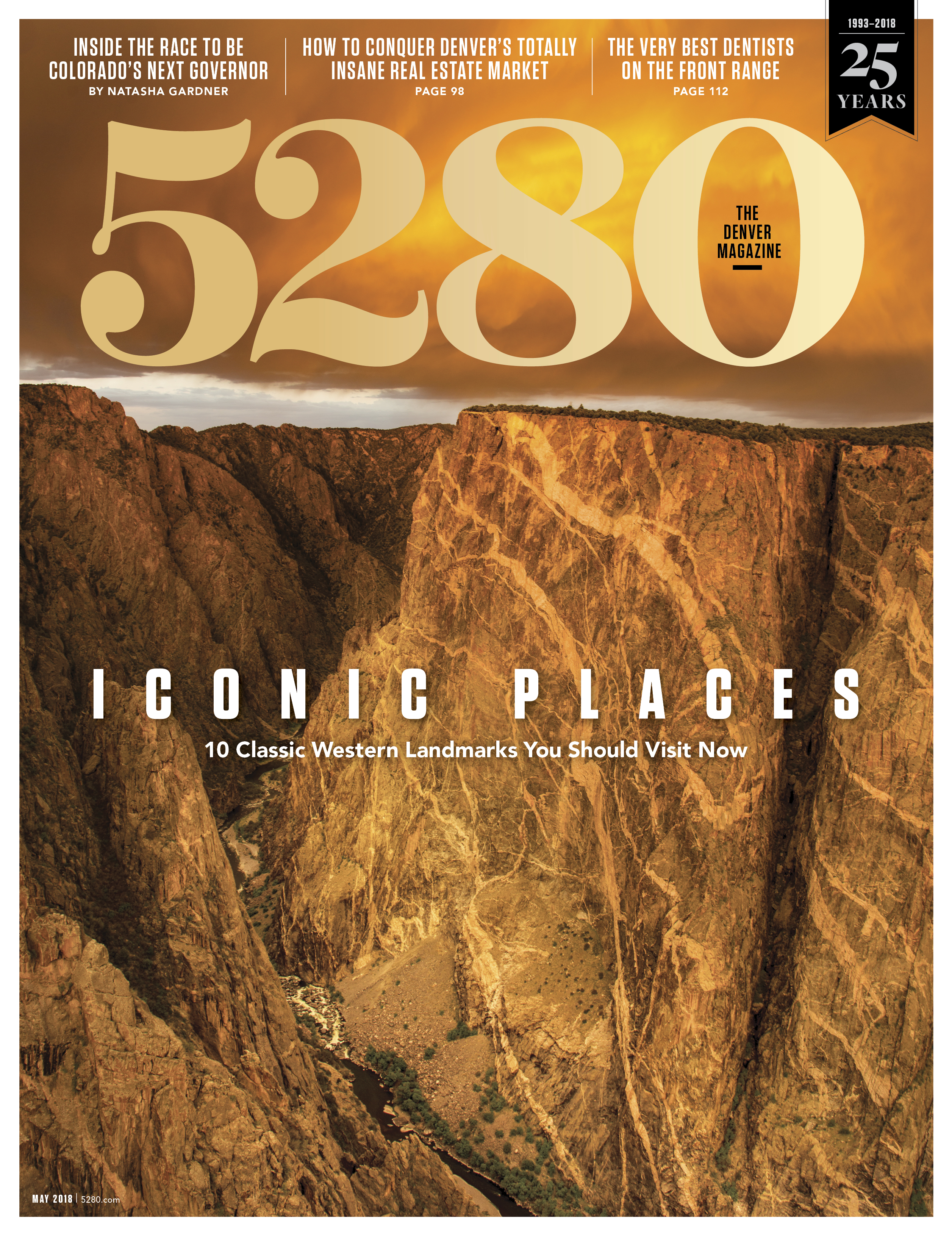The Local newsletter is your free, daily guide to life in Colorado. For locals, by locals.
Tavernetta
3 Stars
- The Draw:
- A focus on hospitality, wine wizardry, and rustic, technical Italian food
- The Drawback:
- A few dishes still need finessing; early dinner service can be rushed
- Don’t Miss:
- Snacks at the bar; gnocchi with lamb ragu; tuna with squid and mushrooms; sorbets; the exciting wine list
My chic Danish friend and I walked into Tavernetta on a brisk afternoon a few months ago, she in fabulous boots that look like they’re covered in tiny disco-ball mirrors, me in salaryman Rockports. We passed the fireplace lounge that overlooks the tracks at Union Station and took a sharp left around the massive open kitchen, where, amid a bustle of cooks, one chef was hand-cutting a four-foot yolk-yellow banner of pasta. Our host led us into the first of two compact, but not cramped, dining rooms; pale stone walls, fabric banquettes, and rich wood accents make the space feel as if it were a sanctuary. My friend looked around and said, “Good hygge.” For the next 100 minutes, we had a properly urbane lunch whose timbre, in food and service, echoed one you might find in Italy’s Milan or Bologna.
From the get-go, Tavernetta bears the imprint of its Boulder parent, Frasca Food and Wine. There, partners Bobby Stuckey, Peter Hoglund, and Lachlan Mackinnon-Patterson have perfected a Unified Theory of Hospitality that has much in common with that of Wolfgang Puck in L.A. or Danny Meyer in New York City: fastidious but relaxed pampering. Stuckey’s master sommelier expertise has also produced one of the most important Italian wine programs in the country, winning Frasca numerous accolades, including a James Beard Award for Outstanding Wine Service in 2013.
Italian wine fans were rightly excited about what Stuckey’s team could bring to Denver. The Tavernetta list, curated and updated weekly by wine director Carlin Karr, runs long from the Alps to Sardinia, meandering into interesting tributaries—best-in-class Verdicchio from Villa Bucci in Marche, eight different terroir offerings from the Mt. Etna vineyards of Passopisciaro in Sicily. Yes, the list contains a lot of deep-pocket exotics, such as $1,200 Amarones and the usual super-priced super-Tuscans, but there are bottles from most regions for less than $60 and a few for under $40.

A seasoned Frasca kitchen alum, chef Ian Wortham, also migrated to Denver for the launch. But where the Frasca menu is a meditation on the Friuli-Venezia Giulia region, Wortham’s food at Tavernetta is Pan-Italian. It’s neither predictable nor surprising, which seems to be the idea. There’s Gorgonzola with honey to start or, say, a nice carpaccio; you can order seafood fritto misto for the table. Handmade pasta is on the menu, of course, including gnocchi with lamb ragu and tagliatelle with lobster and Calabrian chiles. The savory dishes culminate in a few simple-sounding entrées, including lamb with cipollini onions and pistachios and branzino with fennel, escarole, olive, and citrus. There’s nothing experimental, and nothing is too expensive. Which means that everything rests on the execution.
Lunch with my Danish friend was close to impeccable. First, we had a potato soup with black truffles that was silky without excessive cream and balanced with a faint vinegary kick; the truffles were not detectable but also not missed. Next, there was a serving of supple smoked salmon, draped into a yurt shape over a pile of arugula and dotted with capers, the whole thing resting on a thin pool of dill-inflected ricotta cream. A late-winter salad of celery root, apple, farro, and pomegranate, also dressed with a barely there touch, popped with bright flavors and crunch.
Then came the aforementioned gnocchi with lamb ragu. There are a thousand ways to get ragu wrong—chewy meat, too much tomato, too much sauce—but only one way to get it right. Mild, lovely, and balanced is what chefs aim for, the culinary equivalent of the Fra Angelico frescoes in the Convent of San Marco in Florence. Tavernetta’s version—both the sauce and the dumplings—is heavenly, with the lamb adding a touch of earthy funk.
But the best dish was a surprise: an entrée called simply “tonno.” Two thick wedges of seared prime-cut tuna were perched on a bowl of stewed squid and mushrooms. The squid had been slow-cooked to almost the same soft texture as the oyster mushrooms. Butter was deployed to finish the broth, to luscious effect. In all, it was a brilliant lunch for the sort of afternoon in which rushing back to work is not required.
Dinner at the bar on another occasion reaffirmed the pleasure of solo dining in a restaurant that respects the solo diner. Tavernetta’s bar menu includes several “cicchetti,” the tapaslike snacks found in Venice, including “frittatine” (fried balls of gooey pasta, in this case with prosciutto cotto, peas, and mozzarella) and “panelle” (chickpea-flour fritters). The frittatine, shaped like large dice, had the crust and crunch found around the edges of my mother’s baked mac and cheese from way back when. Inside, all was molten, cheesy goo and the particular soft delight of noodles cooked beyond al dente. The fritters, meanwhile, hot from the fryer and starchy as an Al Gore speech, sat on a garlicky salsa verde.
This was exactly the sort of robust food to have with a $25 pour of 2013 Castello di Neive Barbaresco, which was served in a glass large enough to accommodate a champion koi. Is a single pour of wine ever worth $25? Well, yes. This red was light but with a great fruit core, having balanced tannins, the prune-y bass notes of grapes grown on hot hills, proper acids in the Italian style, and none of that bruising oak that still mars a lot of New World reds.

Tavernetta, however, isn’t perfect. A dinner for four became a lesson in how not to serve a $500 meal at the early hour of 5:30 p.m. The fact that it was the only time we could snag a table on a Saturday was not the buzzy restaurant’s fault, but the need to cycle us out was. Either you have a seating at 5:30 or you don’t. If you do, I expect 8 p.m. pacing, unless you’re charging early bird prices and take a hundred off the $200 Amarone. The sense of being rushed was subtle, but no less aggravating for that; it was the first thing my friends mentioned as we exited.
Still, there were pleasures amidst the haste of that meal, including a brilliant (but no longer on the menu) maiale Milanese: a schnitzel-ed bit of Berkshire pork, fried to a deep brown, served with a lemony sauce and pancetta-infused greens. The broiled artichoke with crème fraîche and hazelnuts was a nutty treat. But the batter on the fritto misto was indelicate, and the Calabrian chile on well-made tagliatelle with lobster was recessive. A plate of “tonnato”—traditionally, tender veal with a creamy, slightly gritty tuna sauce—was a real misfire, lacking the essential textural component of that dish. And dessert was a double hit, then a miss. A pistachio cake with lemon curd and brown butter was just right, and a bowl of amaro-flavored gelato was creamy but not heavy. The panna cotta was wobbly, but also oversweet and not nearly milky enough.
Tavernetta’s smooth approach to everything from bar snacks to wine, its hospitality-driven service model (but for that rushed dinner), and its cozy yet polished setting all serve to put it in the front ranks of Denver restaurants, as one would expect from a Frasca descendant. I particularly like the relaxed approach to the food—no tiresome tasting extravaganza here. I expect the few kinks will be worked out and in the meantime am happy to call Tavernetta a very good restaurant with the potential for much more.









